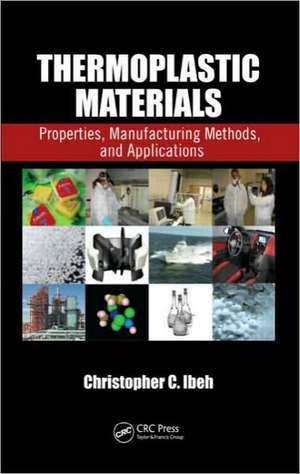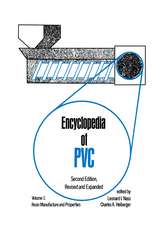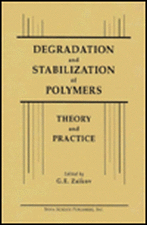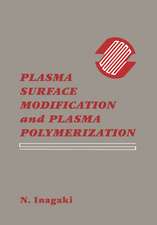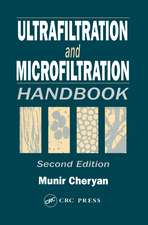Thermoplastic Materials: Properties, Manufacturing Methods, and Applications
Autor Christopher C. Ibehen Limba Engleză Hardback – 25 apr 2011
Answering the needs of manufacturers and product developers, Thermoplastic Materials: Properties, Manufacturing Methods, and Applications provides all the information required to confidently select the right thermoplastic for any application. Based on a course taught to engineering students, the book starts with an overview of the plastics industry, looking at the major companies involved and how their products influence society. It then discusses various topics essential to the understanding and manufacturing of thermoplastics before getting to the core of the book, more than 400 pages of consistently formatted entries, organized according to 19 thermoplastics families and groupings. Each chapter covers raw materials, manufacturing methods, properties, costs, and applications.
Among many topics related to thermoplastic resins, this seminal work:
- Provides micro and quasi-macro perspectives on their behavior
- Evaluates major manufacturing methods
- Discusses crystallinity and permeability
- Elaborates on the properties that make them useful barrier and packaging materials
Preț: 1342.03 lei
Preț vechi: 1636.61 lei
-18% Nou
Puncte Express: 2013
Preț estimativ în valută:
256.80€ • 268.80$ • 213.74£
256.80€ • 268.80$ • 213.74£
Carte tipărită la comandă
Livrare economică 31 martie-14 aprilie
Preluare comenzi: 021 569.72.76
Specificații
ISBN-13: 9781420093834
ISBN-10: 1420093835
Pagini: 640
Ilustrații: 301 b/w images, 79 tables and Less than 100
Dimensiuni: 156 x 234 x 33 mm
Greutate: 0.89 kg
Ediția:1
Editura: CRC Press
Colecția CRC Press
ISBN-10: 1420093835
Pagini: 640
Ilustrații: 301 b/w images, 79 tables and Less than 100
Dimensiuni: 156 x 234 x 33 mm
Greutate: 0.89 kg
Ediția:1
Editura: CRC Press
Colecția CRC Press
Public țintă
UndergraduateCuprins
Introduction and History of the Plastics Industry. Raw Materials and Their Sources: "The Plastics Tree". Basic Structures and Characteristics of Polymers and Plastics. Molecular Weight of Polymers. Polymerization (Resinification) Methods. Crystallinity and Crystallization in Polymers and Plastics. Classification of Thermoplastics. Permeability and Environmental-Stress-Cracking Resistance of Thermoplastics: Barrier Properties and Packaging Applications of Polymers. Polyolefins: Polyethylene, Polypropylene, and Their Copolymers. Polypropylene. Olefin Copolymers of Ethylene and Propylene. The Vinyls: PVC and Copolymers. Polystyrene and Copolymers. Acrylic (Acrylate) Family. Polyester Family. Nylon (Polyamide) Family. Polycarbonates. Polyacetals. Polyphenylene Sulfides.
Fluorocarbons (Teflon Family). Liquid Crystalline Polymers. Polysulfones. Polyimide Family. PEEK. Polyphenylene Oxide. Cellulosics. Functionalized Thermoplastic and Elastomers. Plastics Nanocomposites. Plastics and Sustainability: A Life Cycle Cost Analysis Approach. Index.
Fluorocarbons (Teflon Family). Liquid Crystalline Polymers. Polysulfones. Polyimide Family. PEEK. Polyphenylene Oxide. Cellulosics. Functionalized Thermoplastic and Elastomers. Plastics Nanocomposites. Plastics and Sustainability: A Life Cycle Cost Analysis Approach. Index.
Notă biografică
Christopher Ibeh is a professor of plastics engineering technology at Pittsburg State University in Kansas. He is also director of the Center for Nanocomposites and Multifunctional Materials. Dr. Ibeh holds a doctorate from the Department of Chemical Engineering at Louisiana Tech University. He is a member of the Society of Plastics Engineers, the American Society for Engineering Education, National Collegiate Inventors and Innovators Alliance, American Chemical Society, the American Composites Manufacturers Association, and the Consortium for Upgrading Educational Standards. His research interests include fuel cells, biodegradable blends, fracture toughness of composites, and polymeric nanocomposites. Dr. Ibeh is the organizer of the Nanotechnology Entrepreneurship Forum.
Descriere
This text offers a detailed presentation of thermoplastic materials that are commercially available for the plastics and polymer industries. It discusses chemical structure-property relationships and various categories of thermoplastic resins, including general purpose/commodity, quasicommodity, engineering, and specialty. Some of the thermoplastics covered include polycarbonate, nylon, ABS, and PMMA. Using a process-oriented format, the author explores application areas of thermoplastics to elucidate the interrelation and effect of processing on the properties and performance of these materials.
